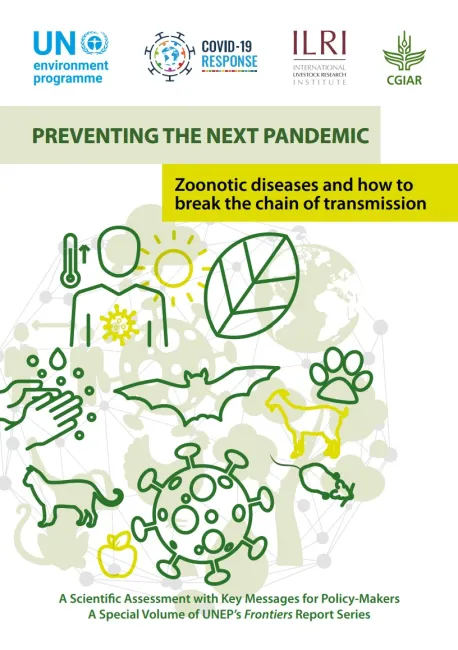This report by the United Nations Environment Programme considers the root causes behind the emergence and spread of COVID-19 and other zoonotic diseases and sets out key messages for policymakers.
Image

The key messages of the report are:
- More research needs to look at the environmental context of the current pandemic and risk of future outbreaks, rather than focusing only on the immediate public health implications of COVID-19.
- Urgent action is needed to fill knowledge gaps on diseases originating from animals and help national governments, businesses, the health sector, local communities and other stakeholders to reduce the risk of future outbreaks.
- This report is aimed towards decision-makers in government, business and civil society at all levels and in all regions and assesses the role of wild and domesticated animals in emerging zoonotic infectious diseases.
- Around 60% of human infections have an animal origin, with 75% of new and emerging human infectious diseases jumping from other animals to people. The food system is one channel by which diseases can leap from other animals to people.
- The frequency at which pathogens pass from other animals to people is increasing because of human activities, including changes in how people source and grow food, trade and consume animals, and alter environments.
- Wildlife is the most common source of emerging human disease, and domesticated animals can also be sources or transmission pathways.
- Human drivers of zoonotic disease include increasing human demand for animal protein, unsustainable agricultural intensification, land use change, increased exploitation of wildlife, increased travel, climate change and changes in food supply.
- Preventing infectious zoonotic diseases can be more cost-effective than responding to outbreaks.
- Policy options for managing zoonotic disease risk include enhancing monitoring and regulation of food systems using risk-based approaches, phasing out unsustainable agricultural practices, and strengthening animal health (including wildlife health services).
- A One Health approach is the optimal method for preventing as well as responding to zoonotic disease outbreaks and pandemics.
Read the full report, Preventing the next pandemic: Zoonotic diseases and how to break the chain of transmission, here. See also the Foodsource chapter What is the connection between infectious diseases in humans and livestock? Read other COVID-19 content in the FCRN’s research library here.
PUBLISHED
14 Jul 2020




Comments (0)